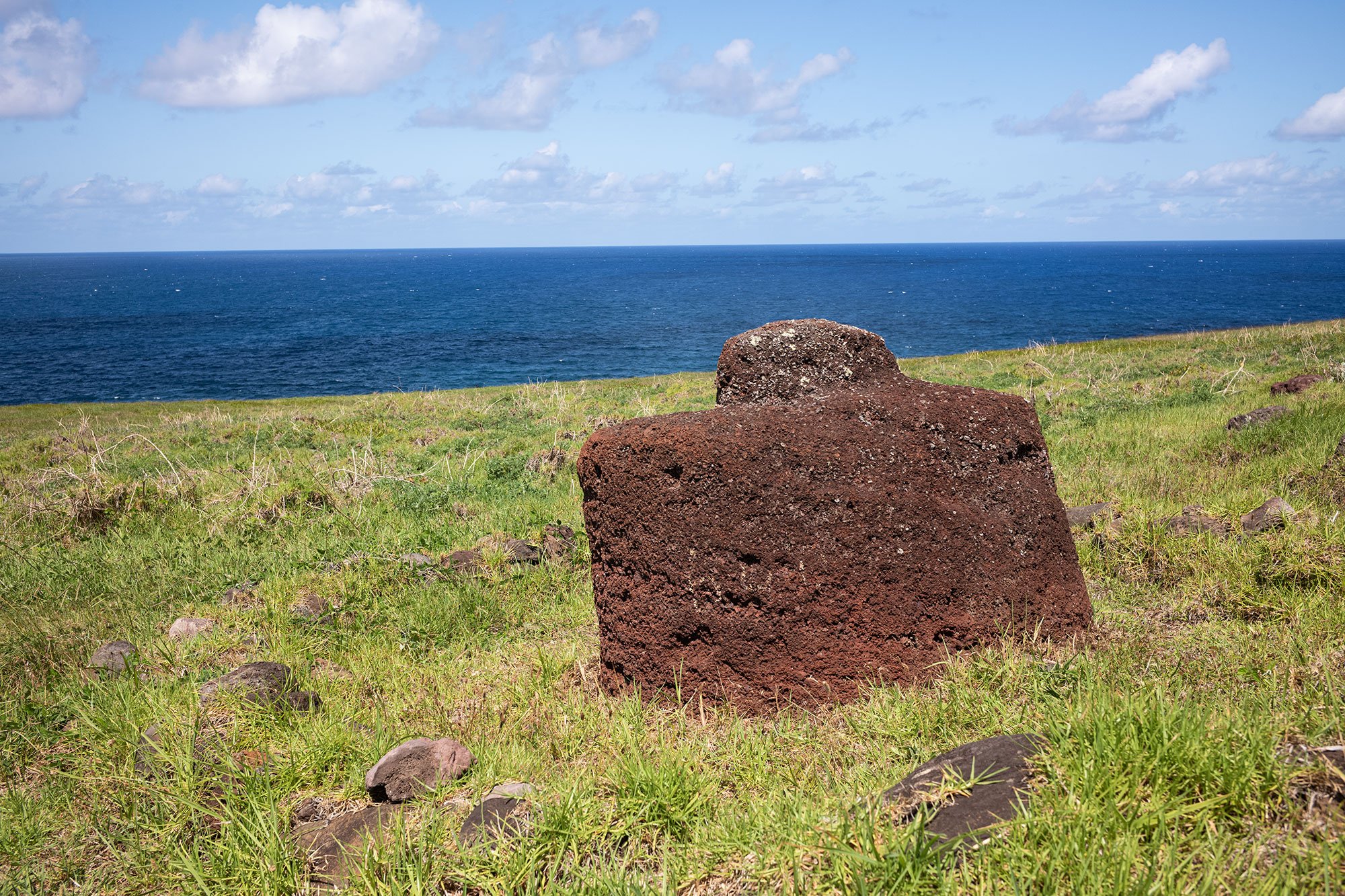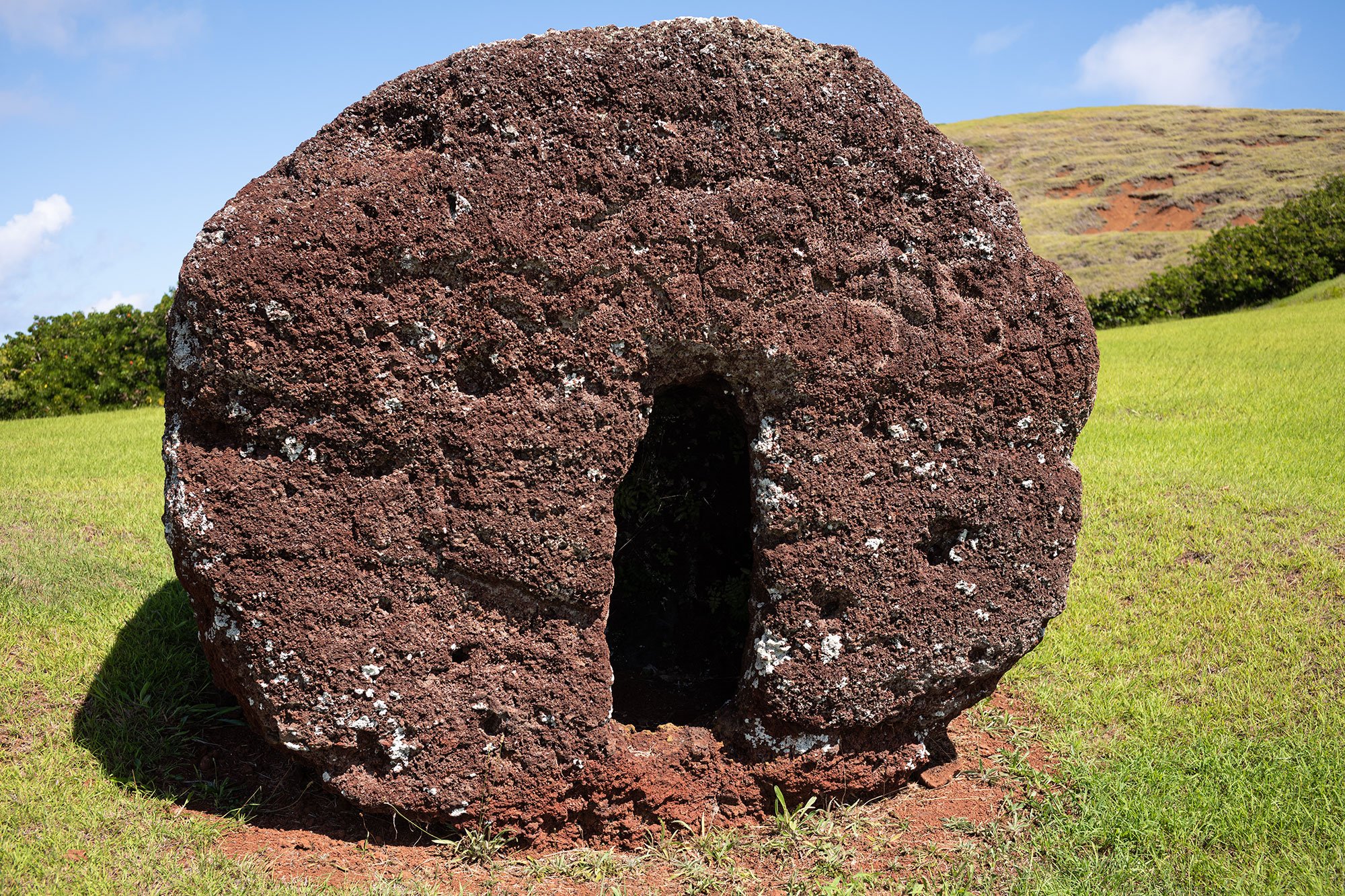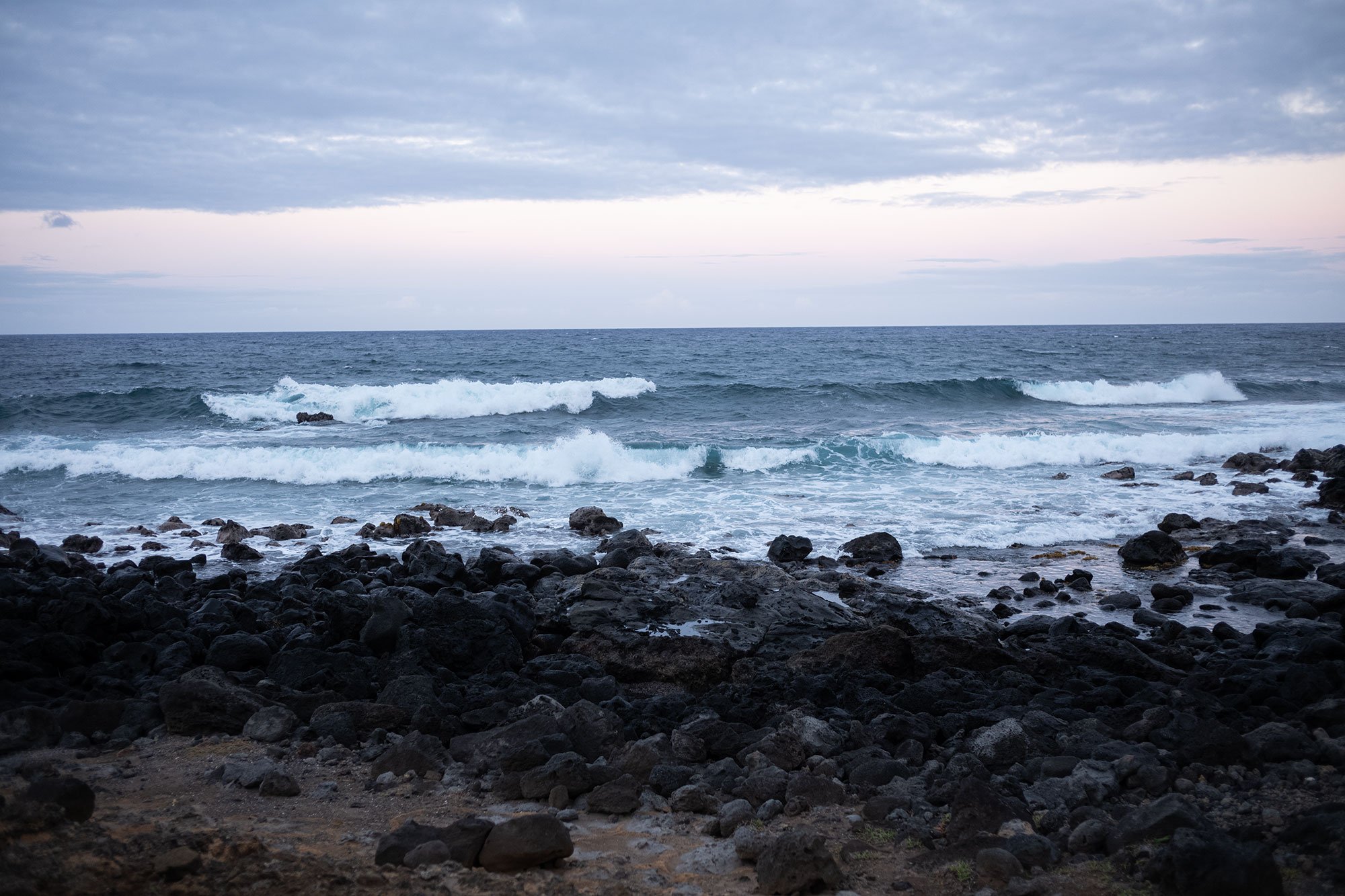
Easter Island: Chapter I
The Birdman cult and an introduction to the moai.
Patricia leis me at the airport. “You are alone?” she asks. I had accidentally reserved a cabin for two and so she had brought two lei with her. I tell her I must have forgot to change the booking to one. She shrugs and leis me again.
She’s a bundle of infectious positive energy and she keeps up a running commentary as she welcomes me to her island and into her car. If I wasn’t already excited to be visiting Easter Island, I certainly am now, and I can’t keep the smile on my face from spreading wider and wider.
The town of Hanga Roa sits right next to the airport, and we are soon driving down the main street. Patricia recommends spots as we pass them and waves to two of her guests who are seated on the small terrace of her favorite restaurant. She takes the long way around to the cabins to give me a broader view of the town and to help me orient myself before she parks in front of the cabins.
She unlocks the office, collects my information, and hands me a key. She opens the cabin door and walks me through it. It’s a lofted one bedroom with a kitchen on the ground floor and the bed on the second, along with a small balcony. I ask if I can sleep with the windows and door to the terrace open; she cautions me against it. There are lizards and large flying cockroaches that are attracted to the light. She tells me I can, but it’s up to my what my tolerance for flying insects is.
Before she leaves she points out the radio and adjusts it to a station that plays local music in the morning. She tells me to text her if there’s anything I need, anything. And with a huge smile, she’s gone.
• • •.
On approach, our flight passed the island before turning around to square up with the runway. I had a perfect view. I almost didn’t believe it was Easter Island, even though it matched the shape of the map I had been pouring over. In my mind I outlined the different routes I was to take and the different areas of the map I was to explore. My excitement was palpable.


Tuki arrives shortly after I check in. He’s come to take me on my first tour of the island and I cannot wait. I’m ready and waiting in front of the cabins when he arrives.
He tells me his motto is slowly in the morning not so fast in the afternoon. But it’s already the afternoon and he’s a little surprised at the extent of our itinerary for the day. Originally, I was supposed to spend the afternoon doing half of a tour, completing the remainder on Monday morning. But a cruise ship is scheduled to arrive Monday morning and so the company has arranged it so that I’d be doing the full day tour in the afternoon. They need their resources back to handle the cruise ship guests.
Tuki drives us out of town past the airport and up the slopes of Rano Kau. We alight and walk to the crater rim to down into it. The volcano is filled with water and partially covered with marsh. Tuki tells me it’s a reservoir for the town and that the locals are allowed to walk into it to collect medicinal herbs and plants. He then tells me the history of the island, pointing out the trajectory of the sun and the ways in which people have navigated here.
He speaks of the history as an oral history, and then proceeds to recite the history in his native tongue, pointing out how the rhythm and the rhyme aid in the telling and in committing the words to memory.

At one point he crouches down by a rock and starts filling in indentations with pebbles and stones. He points out the Pleiades, marked in the stone. Further on, he stops by another rock, to show me the carvings that have been made upon it. Small groups come and go, following in our footsteps. In the distance, I see people walking the edge of the caledera. A family of Indians approache and then continue on, cirumambulating the mouth of the volcano.



We walk back to the car and we continue down the road to Orongo, a ruined village built in the 18th century. It’s a beautiful spot overlooking the ocean. The lush green fields slice the blue of skies and the water from each other. Stone structures emerge from the landscape as if they were peeking out from the ground to admire the views.



As we walk Tuki tells me about the cult of the birdmen and the annual competition to collect the first sooty tern egg from the islet of Motu Nui. From the islet, a contestant would name a hopu (an adult of lesser status) who would swim to the island, secure an egg, swim back, and climb the sea cliff of Rano Kau to Orongo, where they would present the egg to the contestant who would be named the tangata manu.
He would then be entitled to tributes and would go into seclusion for a year in a special ceremonial house.





Back in the car we drive back around the caldera, skirting the airport. The flight I had arrived on has departed; we watched it from the volcano. It’s the only flight of the day. Pre-covid there were up to three flights a day during the high season. Now there are four or five a week. In March it will be down to two.
At the end of the runway on the edge of the island we stop at Ahu Vinapú and I get my first up-close sight of a moai. It sits on the ground, partially buried in the earth before its plinth. A red topnot sits nearby.
Tuki points out the stonemasonry in the rock, tracing the tight seams and posits his own theories on how these came to be.



We drive back around the airport to Puna Pau, a quarry just outside the town from whence the red top knots were hewn and carved. Tuki tells me that they’ve had a lot of unseasonable rain this summer, which has resulted in the beautiful green grass that surrounds the topknots that are strewn over the fields.
He lets me take my time, walking up the hill to the quarry. I can’t help but take photo after photo, the deep red stone like gasps of earth that have erupted from the fertile ground.





As we drive I ask Taki tells me about his other responsibilities. He’s just come back from Canada where he attended a conference on conservation. He’s the director of a foundation that’s looking to preserve the waters around Rapa Nui and other Polynesian islands. He has a dream to build a blue wall around a triangle of islands and increase the amount of ocean that’s protected for generations to come.
• • •
Our next stop is the seven moai of Ahu Akivi, which uncharacteristically face the ocean. Generally, moai are set up along the coast facing into the villages to keep a watchful eye over the inhabitants. Another feature of the moai at Ahu Akivi is the fact that they exactly face the sunset on the Spring Equinox, and have their back to the sunrise during the Autumn Equinox. It’s my first It’s my first full view of moai, and seeing the seven matched statues on their pedestal sends a thrill through me.





From Aku Akivi we drive to a small lot by a ticket structure. It’s just after five and the attendant is closing for the day. Taki is unperturbed and he opens a locked gate for us to begin a short hike to some nearby caves. He points out banana trees that grow up from out of the tunnels where the roofs have fallen in. You wouldn’t event guess that there were openings in some places until you were upon them.
Reaching the entrance to some large caves, we climb down to the floor and begin our explorations.

We walk a bit through the caves and Taki talks about how they were formed, pointing out various bits of vegetation as we pass. At one point he shows me a plant with natural hydrophobic properties and tells me that they were once ground up and used to coat the moai to keep them from eroding.
He leads me from one cave to another, which disappears into the darkness. He tells me to close my eyes. He has a gift for me.
I listen to the wind in the trees and the surf that breaks not too far from where we are standing. We stand there for a minute listening to the sounds around us and then he starts to sing. It’s a simple song, with a melody that is just shy of a lullaby. The music entwines itself with nature’s song until Taki’s song ends. His voice is carried away by the wind.
After another minute he has me open my eyes. I can see the walls of the cave distinctly until my eyes readjust and the cave fades back into darkness. He tells me that this is a gift of the present. To take the time to listen and to know my surroundings. He asks me if I heard all of the sounds around me. The wind, the rustle of leaves, the bees that few in and out of the hive behind us, the sea.
He tells me that when we move through time we face backwards. We can only see what has past. The future is always at our back, unknowable. But he encourages me to take the time to be present and to see what is happening as it happens.



The walk back to the car feels quicker, as return trips always seem to be, and then he drives us to our final stop for the day, Ahu Tahai. It’s one of the most easily accessible moai from town, and Taki points out a path I can take along the coast to reach the spot most easily. It’s a popular place to watch the sunset, and I’ll spend the next evening there.
He points out a restaurant on the hill and tells me that his friend runs it and that it’s a good place for breakfast. I made a note of it to try it when I have the time.



At 8:30 PM Tonchi picks me up to take me to the eastern side of the island. In the morning, we’ll watch the sun rise from behind the 15 moai situated there, but tonight we will be sleeping in a cave nearby.
He takes off on his motorcycle and we follow in a car, driving the width of the island until he turns off and we follow dirt roads towards the ocean.
When we arrive, he introduces me to his girlfriend Alice and his niece Miti. It’s their first time sleeping in the cave, and I learn that I’m Tonchi’s first guest on this new venture. He and Alice usually run horse treks up to the volcanoes.




It’s a beautiful location by the coast. The sea crashes on volcanic rocks as dusk leeches color from the skies. Alice has started a fire and they are already preparing the boney fish and sweet potatoes that will comprise our dinner. I ask Tonchi if his niece likes chocolate. She does and I give her two packs of peanut M&Ms, which she shares with Alice.
Bugs scurry around the campfire and Miti happily squashes them, jumping from place to place as she spots them in the dimming light. I walk around the area, seeing ruined pedestals and fallen moai until I am called to dinner.




Dinner is delicious. The sweet potatos are the best I’ve ever had. We eat with our hands, crouched around the grill, tossing bones back in to the fire. Afterwards, I linger outside to admire the stars. The Milky Way spills across the sky and as I gaze up at the heavens I catch shooting stars out of the corner of my eyes. It’s all too beautiful: the setting, the coast, the island, and once again I cannot believe I am actually here. When I finally make my way into the cave my mind is full of wonder; my heart full of love for this remote idyll in the ocean.
16 February 2023
🗿




